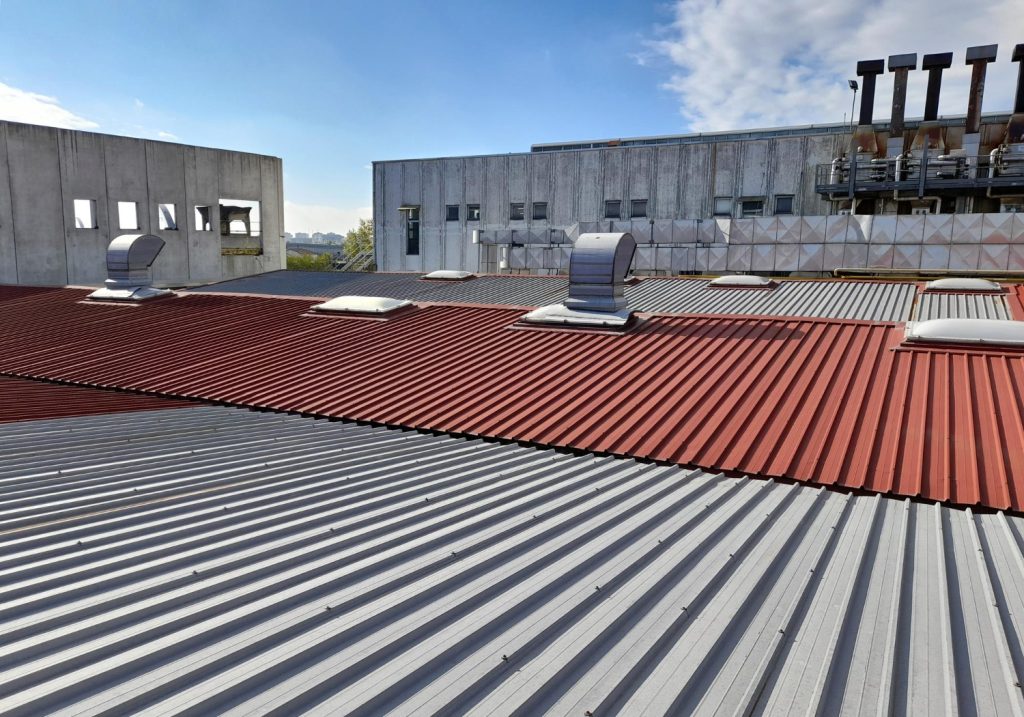Marketing Strategies for Large Commercial Projects

Marketing for large commercial roofing jobs doesn’t work the same way as it does for residential work. Commercial clients are working with much higher stakes. They’re managing multi-unit buildings, office spaces, warehouses, or retail centers. The budgets are bigger. So are the risks. That’s why a clear marketing strategy built around what matters to these clients is key if you want to land the big projects. It’s not just about exposure. It’s about trust, proof, and targeting the right eyes with the right message.
Large commercial jobs often involve a lot of decision-makers. Building owners, property managers, and corporate maintenance teams are all looking for signs that you know how to handle projects at scale. Your message should speak directly to them. It’s not about getting found randomly. It’s about showing them you belong on their shortlist. Let’s walk through what it takes to build a commercial roofing marketing approach that gets results.
Understanding Your Market
Before you start pushing out campaigns, take a good look at who you’re actually trying to reach. Commercial roofing projects usually involve several people with different roles. Instead of selling to a single homeowner, you’re selling to:
- Facilities managers who want low-disruption installs
- Property owners who care about cost and timelines
- Developers who focus on long-term value
- Board members who need approvals before spending
Each of these people looks at the job through their own lens. Your marketing should reflect that. For example, a building owner might care more about warranties and asset value. A maintenance manager is probably more focused on safety and service response time. Try to figure out what each type of stakeholder wants to hear.
Knowing what types of buildings you’re targeting also helps shape your messaging. Roofs on schools, warehouses, hospitals, and strip malls each come with different concerns and requirements. Messaging that sounds loose or too general can actually push a client away. Generic wording won’t help here. These decision-makers want to feel like you’ve been through projects like theirs before.
So think ahead. Ask yourself what this type of client needs to know to say yes. Build your pitch around that. This makes your messaging stronger, more relevant, and more likely to earn a call.
Creating a Strong Online Presence
Your website often makes the first impression. If a commercial client ends up there and doesn’t see what they need, they’ll move on fast. The site should not only look professional but also speak directly to commercial clients. That means clear language, simple navigation, and the kinds of details commercial teams are actually looking for.
Here are some core items that every commercial roofing website should have:
- Past project highlights focused on large, recognizable buildings or multi-phase installs
- Detailed service pages for different types of roofs, such as flat, metal, and modified bitumen
- Safety and compliance information, such as safety records or certifications
- Strong calls to action with clear ways to request a quote or consultation
- Testimonials or signage permission examples when possible
Make sure your site is search engine friendly. Commercial roofing marketing depends on being visible when prospects are actively searching. Use specific phrases your ideal clients might type in, such as “commercial roof replacement for office buildings” or “warehouse roofing contractors near me.” Include these in headlines, photo tags, and service pages.
Also, check if your website functions well on both desktop and mobile. Maintenance supervisors or building engineers might be pulling up your site from a work vehicle or jobsite. If things don’t load quickly or are hard to navigate, they’ll leave. Always test the site from the perspective of someone in the field.
Leveraging Social Media and Content Marketing
Reaching commercial roofing clients through social media isn’t about viral videos or funny memes. It’s about sharing valuable, trustworthy content that speaks to real needs and industry demands. LinkedIn is particularly useful. Property managers, building owners, and developers use it to find qualified contractors, stay updated on trends, and read up on industry advice.
Keep your posts professional but approachable. Highlight your completed projects with captions that mention building types, materials used, square footage, and problems solved. Simple before-and-after photos of large jobs can go a long way in showing what you’re capable of.
Written content also matters. Blogs, white papers, or downloadable checklists can offer value to potential clients. Focus on real-life topics they care about, like:
– Differences between single-ply and built-up systems for large surfaces
– How insulation decisions impact energy bills in commercial warehouses
– What roof defects to look for in aging flat roofing systems
When you post content regularly, whether it’s blogs or quick project recaps, you position your business as the go-to expert. That builds trust over time.
Align your messaging across every outlet. If your tone is serious and detailed on your website, but your social posts sound casual or vague, it creates confusion. Clients should feel consistent levels of professionalism no matter where they see your brand.
Network Building and Offline Strategies
Just because the internet dominates most marketing, doesn’t mean offline methods are dead. For commercial roofing, face-to-face interactions still drive a lot of trust and long-term deal flow.
Industry events, commercial property expos, and trade shows give your team the chance to connect with people who make hiring decisions. Show up with the right visuals and talking points. Focus on what matters to that audience: safety, risk reduction, past commercial experience, and the ability to manage tight timelines.
Another great tool is the lunch-and-learn. Hosting a short educational session for local property managers or facility directors gives you a chance to offer value while planting the seed for future jobs. Even small meetups or training events show you’re engaged and ready to serve larger organizations.
It also helps to get involved in local groups or commercial real estate associations. These groups often host mixers, charity events, or member meetups. Regular attendance helps your name stick when someone’s making calls for their next big project.
You don’t have to be everywhere all at once. Focus your offline marketing where your ideal clients already spend their time.
Measuring and Adjusting Your Strategy
No matter how solid your commercial roofing marketing strategy is, you need to measure what’s working and what’s off the mark. Keeping an eye on the data helps you course-correct before resources go to waste.
Here’s what to track:
– Website page visits, especially to service and project pages
– The number and quality of quote requests or inquiries from commercial leads
– How much engagement your business receives on industry-focused posts on social
– Open and click rates on commercial segments in your email list
– Sales conversion rates from form submissions to booked consults
Evaluate your numbers frequently. It’s easy to assume something’s working just because you’re getting views. But if conversions are low, you might need to revisit your messaging or your call-to-action placement.
If LinkedIn messages bring bigger leads than paid ads, shift your focus. If your blog posts bring lots of clicks but no outreach, rework the articles with stronger follow-ups or links to booking forms. Let the numbers make the next set of marketing decisions for you.
Marketing isn’t a “set it and forget it” effort. It requires attention, testing, and smart adjustments over time. Small shifts based on what your clients respond to often lead to real growth.
Growing From One Project into a Lasting Partnership
One commercial roofing job can lead to future work if the relationship is handled correctly. Steady communication after a project helps keep your company top of mind for the next time they need service or expansion.
Reach out every few months. Ask how the roof is performing or if they’ve had any issues. Don’t pitch new work every time. Sometimes, just checking in sends the most powerful message—that you care and you’re accountable.
You can also support that relationship by sending timely resources. A reminder about winter roof prep or a building code update keeps you helpful and present without asking for anything in return.
Think beyond single service. When a client sees that you’re proactive, dependable, and interested in long-term care, that’s what builds loyalty. It often leads to bigger contracts, more locations, and ongoing maintenance agreements.
Commercial roofing marketing doesn’t stop at getting found. It carries through the handshake, the walkthrough, and every touchpoint afterward. Stay present, stay responsive, and treat every job like the door to a long partnership.
To elevate your strategy and ensure success in commercial roofing marketing, consider fine-tuning your approach with expert support. At Roofing Lead Magnet, we’re ready to partner with you. Our team can help you connect with the right audience and strengthen your marketing strategy so your business stays top of mind and earns lasting relationships.
